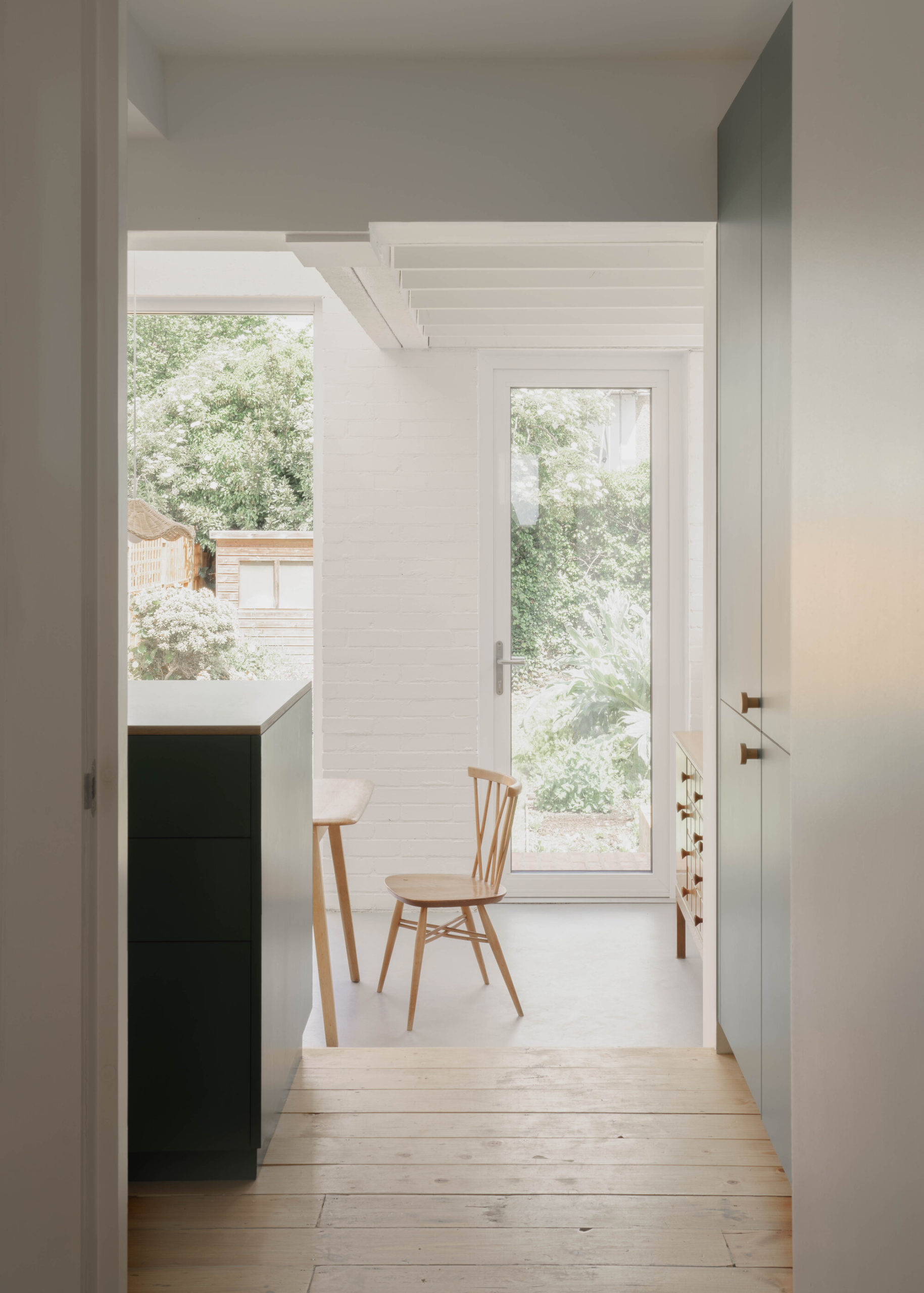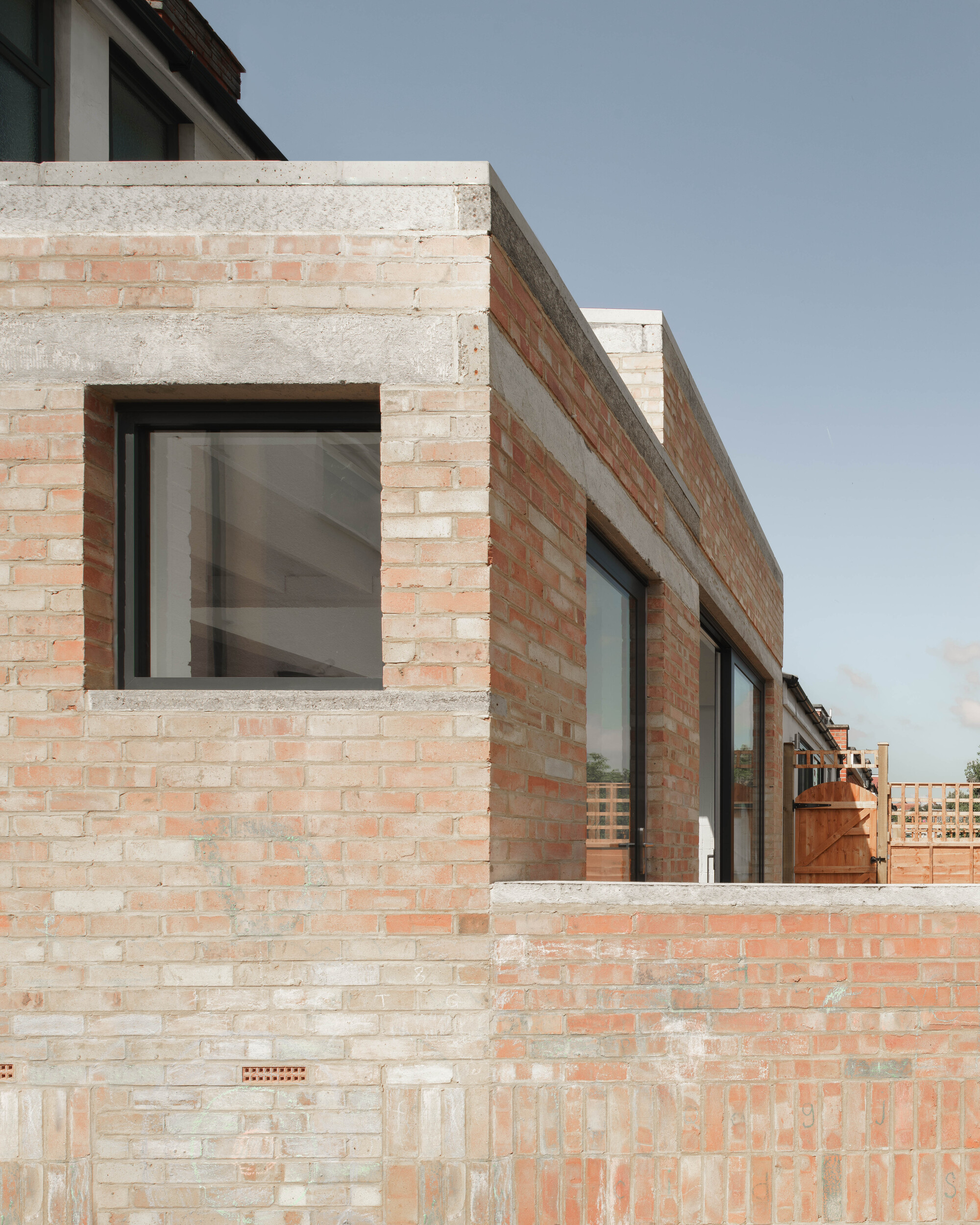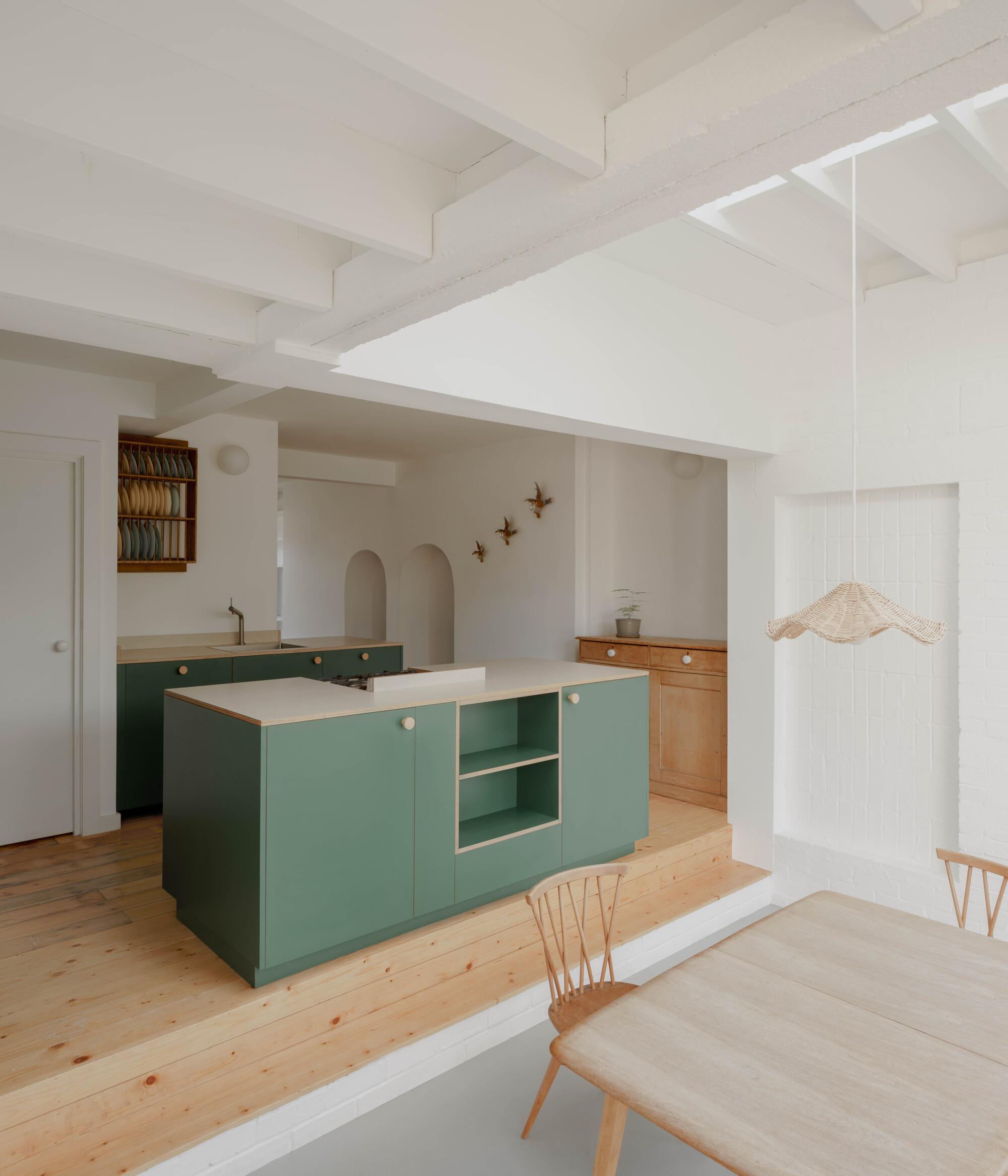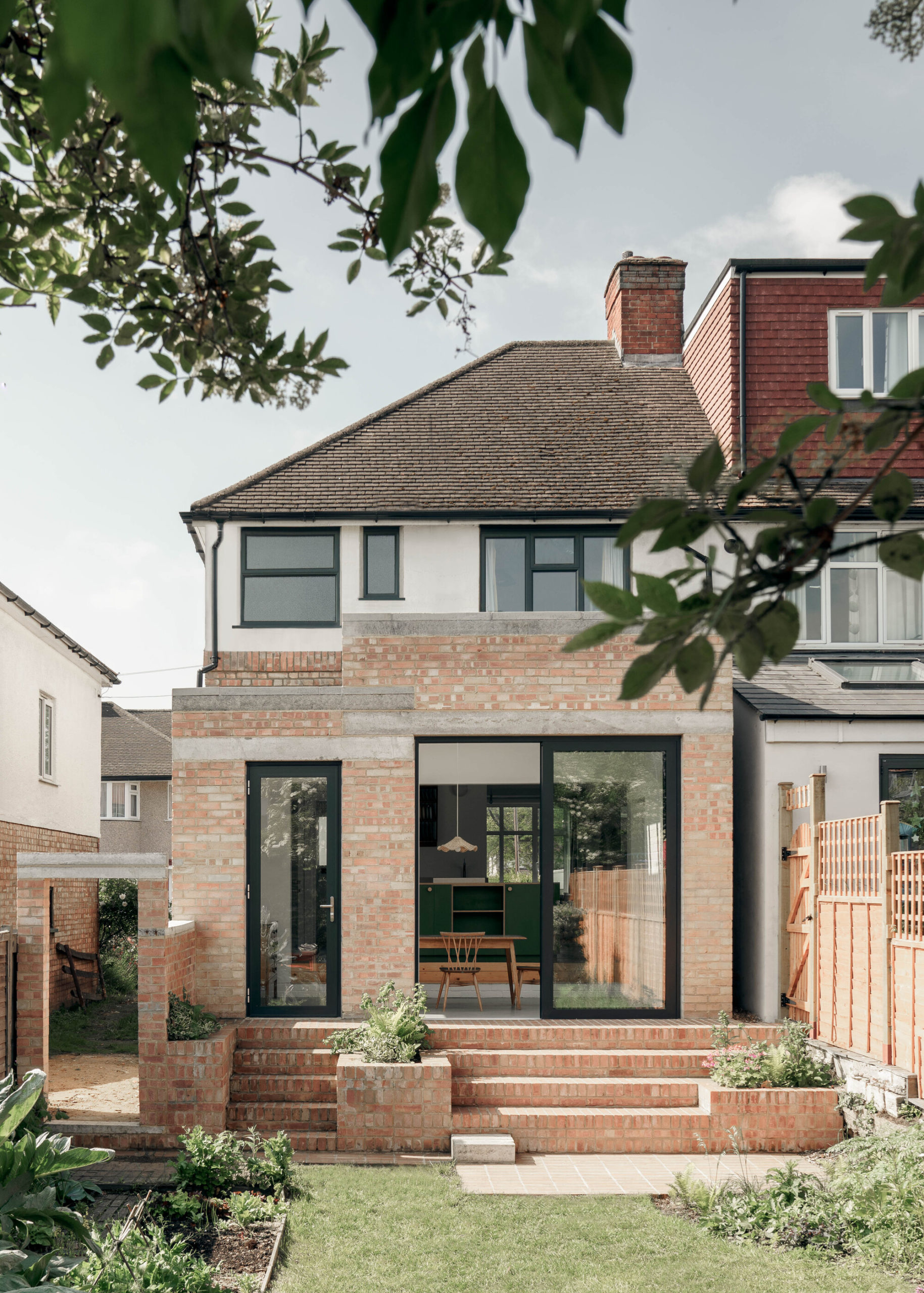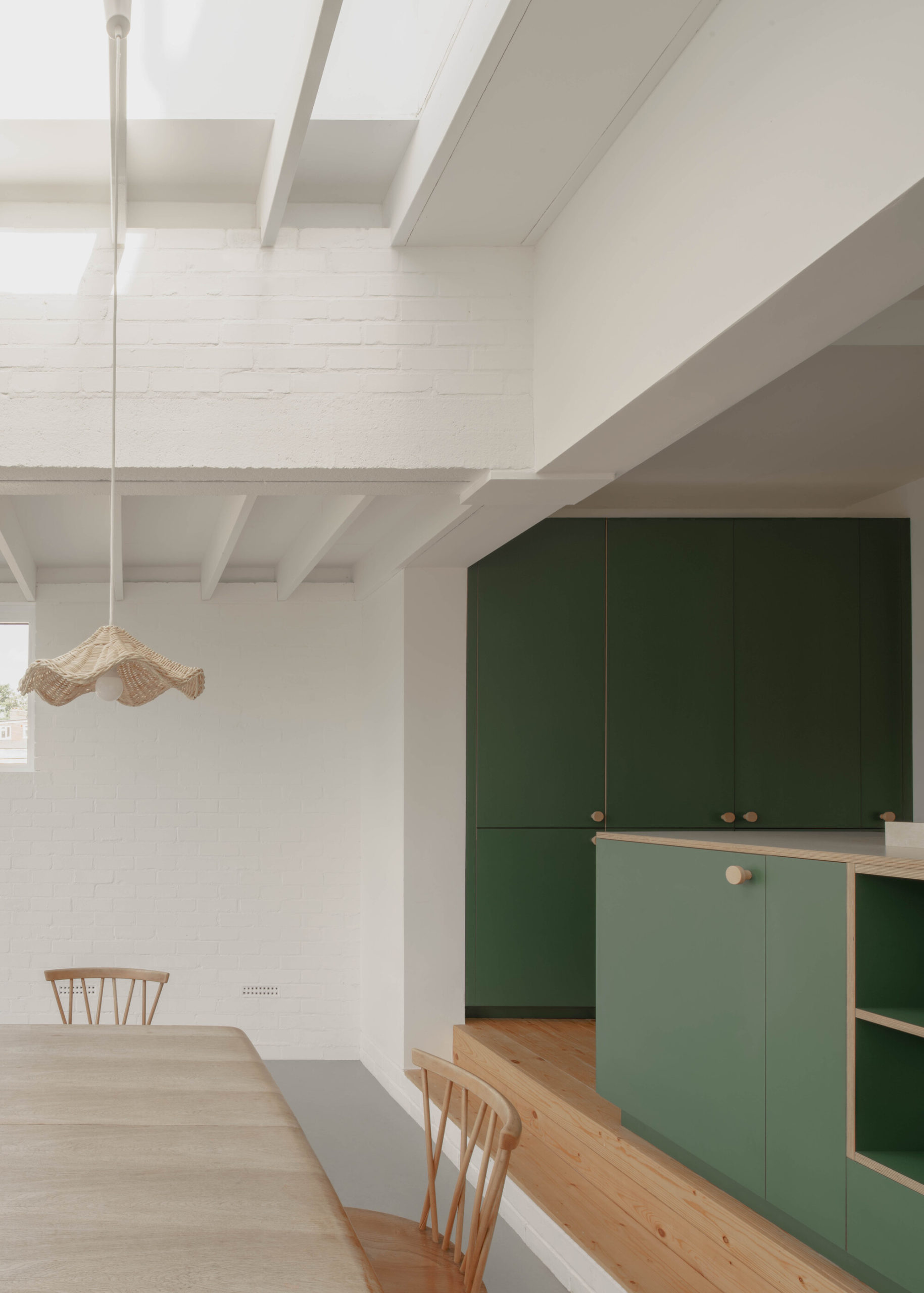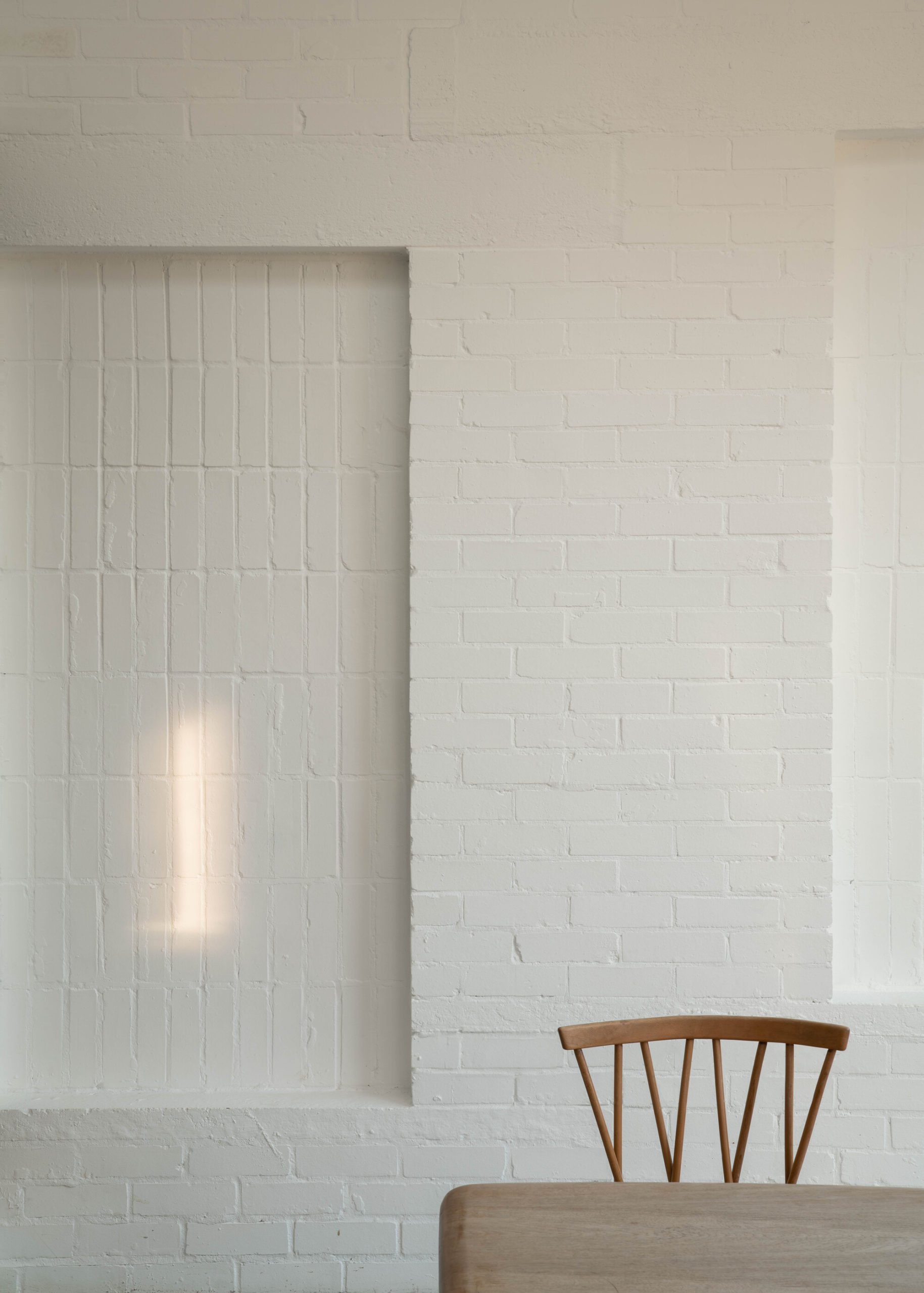Creer House is a minimal home located in Isleworth, United Kingdom, designed by Alder Brisco. Like much of the housing in the surrounding neighbourhood, and of the period, the house is constructed in a common Fletton brick, where lintels are also openly expressed within the masonry. Render is typically applied only to the upper levels of these homes. Each end of terrace property is finished in a hipped, tiled roof where the terrace meets a shared side alleyway. Central to the success of the scheme would be the navigation of an existing 1.3 meter drop from the internal ground floor level to the lawn and beds of the lower rear garden.
The home’s original ground floor plan was arranged with a clear zoning strategy that positions the larger living spaces along the western party wall; while secondary, ancillary, and circulatory spaces sit to the east. This relationship then determines the size of both the front and the rear façade’s openings, where entrance doors enter narrower secondary zones, whilst a bay window and wide patio doors serve the larger living spaces. In recognition of this established pattern, the scheme unifies a reworked ground floor plan within the extension’s massing and fenestration hierarchy, as well as providing a heavily reworked garden landscape design.
The extension’s massing is lifted to the west to create a volumetrically generous dining space with a tall sliding glazed door and roof light. Beyond this threshold, a brick terrace forms broad steps, flanked by planters, where family and guests can rest, enjoy the garden, and eat at the lower patio’s freestanding table area. With an unbroken route running from the front of the house through to the garden beyond, the western party wall remains host to the home’s principal living activities.
The extension drops in height to the east, much as the hip does at roof level, and responds to the neighbouring properties. The change in height is expressed internally where lintels span from the front to the back of the extension in alignment with the ground floor’s remaining partitions and the home’s traditional spatial pattern. A new glazed door provides regular swift access to the garden, with steeper stairs dropping down to this level. A brick and lintel-built garden gateway and wall form the third mass in this stacking of masonry forms toward the garden.
Photography by Nick Dearden


